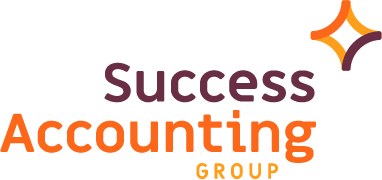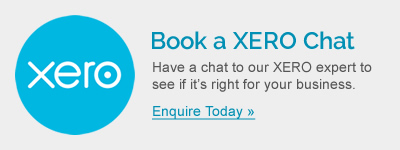FBT 2016: 5 Things Every Business Should Know
How do I Know if I need to pay FBT? What is exempt from FBT? And what to be aware of come 1 April 2016.
Do you know that the FBT rate goes up from 47% to 49% from 1 April 2016? As an employer, we need to start reflecting this new rate in current or new salary packages with employee.
How do I know if I need to pay FBT?
Fringe Benefits is a ‘payment’ to an employee, but in a different form to salary or wages. Basically, you are providing the employee with fringe benefits in respect of the employment. For example,
- Allows employee to use a work care for private purposes
- Provide loans at reduced interest rates to employees
- Pay for or reimbursed any private expenses incurred by employees
- Provide house or unit of accommodation to employees
- Provide employees with living-away-from-home allowances
- Provide entertainment by way of food, drink or recreation to employees
- Provide a salary package (salary sacrifice) arrangement in place
- Provide employees with goods at a lower price than you normally sold to the public
Shortly, we’ll be sending out our annual FBT Questionnaire to all our business clients to help you further in identifying if you have a FBT liability
What is exempt from FBT?
Certain benefits are excluded from the scope of the FBT rules. The following work related items are exempt from FBT if they are provided primarily for use in the employee’s employment:
- Portable electronic devices that are provided primarily to use in the employee’s employment – further information below
- An item of computer software
- Protective clothing required for the employee’s job
- A briefcase
- A calculator
- A tool of trade

Two laptops are better than for small business
Small business with a turnover under $2M does not have to pay FBT on work-related portable electronic device, such as mobile phone, laptop and tablet. Even you offer employee more than one device and they have substantially identical functions. All other business are limited to one device that is identical or similar to another for each employee per FBT year.
Is salary sacrificing worth it?
Now is a good time to review any salary sacrifice agreement to ensure they will still achieve their intended goals and not creating an administrative burden for little to no benefit with the FBT rate continuing at 49% for another year. For employees earning above $180K however, the difference in timing between the FBT year and the income year creates a unique planning opportunity between 1 April 2017 when the FBT rate reduces back to 47% and 30 June 2017 when the 2% debt tax is removed.
Travelling or living away from home – what’s the difference?

The ATO will be strictly looking at Australian Taxpayers claiming living away from home (LAFH) allowances to ensure that they are not accessing FBT concessions incorrectly. Hence, let’s look at the difference between travelling or living away from home.
If your employee is living in Melbourne but have to travel to Sydney for ad hoc trips every other week, they are probably just travelling and would only be able to claim travel deductions, not FBT concessions that apply to LAFHA’s. If that person however sets up a home temporarily in Melbourne and keeps their home in Sydney for their use (unrented), then its more likely they can access the living away from home allowance concessions.
Care also needs to be taken where transport is provided to fly-in-fly out workers as special rules apply and its important to ensure that travel is exempt from FBT.
Do you provide any car fringe benefit to your employee?

Does your business make vehicles owned or leased by the business available to employees for private use, including the travel between home and work? If yes, then we encourage you to pay more attention on managing the FBT in these instances as the ATO is conducting a data matching program that is aimed at moto vehicles to try and capture benefits that are not currently being reported through FBT.
You can calculate the taxable value of your Car Fringe Benefit using either the statutory Formula Method or the Operating Cost Method.
But that’s our job!
Your job is to complete and email us your 2016 Motor Vehicle Odometer Reading Form as soon as possible and email to grow@successaccountinggroup.com.au. This information will help us work out:
- Which method yields the lowest taxable value
- Reduce your FBT liability to nil; and
- Ensure you keep adequate FBT records
Warning! You need to have a valid log book to substantiate your business use. You will be required to sign a Log Book Declaration. If you don’t have a log book for each car, start one ASAP.
For more information about Car Fringe Benefits download our What is a Car Benefit FactSheet.
How we can help
If you’re not sure if your business has a FBT liability or not, that’s ok. Shortly, we’ll be sending out our annual FBT Questionnaire to all our business clients to help you further in identifying if you have a FBT liability, and provide us with all the information we need to prepare and lodge any FBT returns required.
The current FBT year ended on 31 March, so be sure to complete and return the questionnaire by 28th of April 2016 so as to not miss the lodgement date of 25 June

About Lan Nguyen
Lan is the Founder and Chief Strategist at Success Accounting Group, Melbourne based CA firm. In a matter of short 8 years she has built up a reputable Chartered accounting firm with 3 offices and a team of 6 professional accountants and support team members. Her mission is to provide Innovative and Strategic Financial advice to help her customers make smarter financial decisions today for a brighter future.
Success Accounting Group is for established business owners who would like help to grow a sustained business. As a business owner you understand what drives your business success with our accounting team taking care of the rest.




